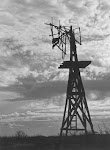John Griffin Narrative.... not documented although several books have this info
Born in Wales, Sergeant John Griffin, a Naval officer, went first to England, where he changed his name from Griffith to Griffin, the English version. He immigrated to America in 1635 along with his older brother, Edward.
John sailed from England, August 24 aboard the ship, CONSTANCE, en route to Virginia.
Link to Ship's Passenger List.
http://www.olivetreegenealogy.com/ships/tova_constance1635.shtml
He was in the employ of Capt. Claiborne, the Secretary of the Virginia Colonies. He owned three square miles of land (l, 920 acres) in Virginia.
He worked with the Indians of Virginia. He could speak English and Welsh, and record has it that he was able to converse with the Indians also.
In June, 1638 when Lord Baltimore of Maryland ordered an attack on the Virginia Islands of Kent and Palmer, John and Edward were on a ship that was captured. They escaped by ship and left Virginia. John went to Connecticut and his brother, Edward, went to the Dutch Colony of Amsterdam (New York).
John’s name appears in New Haven CT records in 1642 when he was enrolled in the militia. In 1643 he was fined a few pence for not having his arms in shape. He took the oath of fidelity at New Haven on July 1, 1644.
He removed to Windsor, marrying there, in 1647, Anna Bancroft of Windsor, and appearing in the Windsor records in August, 1659. John and Anna (Bancroft) were among the first settlers from Windsor to move to Simsbury where he was a Representative for some years.
Simsbury, CT (Indian name, Massacoe) was settled about 1647. The first Indian deed was given to John Griffin, 1648, recorded in the town of Windsor.
The shipping industry had a great need for tar and pitch for the ships. John having been on ships realized this, and having located a great source of pine trees began to manufacture tar and pitch. He had joined with Michael Humphrey in the manufacture of tar and turpentine in the pine forest of Massaco and Salmon Brook. The tar, used by the British Navy, promised fortunes for both of them.
About 1646, the tar kilns of John Griffin were set afire by Indians. Somehow John found out that the name of the Indian responsible was Manahannoose, a local Algonquin who was tired of English encroachment. Manahannoose was captured, and according to a new law was ordered to be a servant of Mr. Griffin, or shipped off in return for enslaved Africans, or to pay 100 Pounds.
To prevent this from happening, his village deeded the area of Windsor known as Massaco to John Griffin. Although technically illegal for John to accept this deed, he probably looked at it as a promising business venture and took advantage of it. Thirteen years later, (probably after removing the tar and pitch) John turned his deed over to the colony.
In 1663 a grant of 200 acres was made to John Griffin in consideration for taking the land from the Indians and “that he was the first that perfected the art of making pitch and tar in those parts --The land was to be taken up where he can find it between Massaco and Waranoake, whereof there may be forty acres of meadow, if it be there to be had, and be not prejudicial to a plantation, and not granted."
This was later known as "Griffin's Lordship or Griffin’s Hardship" and today there are roads and areas with the name of Griffin.
John Griffin is considered to be the first settler of Simsbury and Granby. He represented Simsbury in the General Assembly from 1670-74. He was a prominent and successful businessman and pioneer, but that was not all. He also had a lighter side. In 1655 he was fined 20 pounds on a complaint of "riotous conduct of John Griffin, John Bancroft and Jacob Drake."
His estate inventory of August 23, 1681 included about three square miles of land, or about 1,920 acres. We don’t have a copy of his will, but one of his daughters, Abigail Griffin Segar, received one cow.
Abigail Griffin Segar and husband Richard died within weeks of each other leaving 3 children.
Their household inventory included: tallow, bees wax for candles, earthen dishes, bowls, a pewter cup and 2 pewter spoons, 2 glass bottles, a meal sieve, an old iron pot, iron kettle, and a frying pan. Furniture: 1 bed, chest, box, 1 blanket & a “civerland” (coverlet). No chairs or table. No plow, axe, hoe, or saw. One cow had been Abigail’s inheritance from John, Lord Griffin’s estate. They had looms and wove to barter and rent of tools (not many households had looms or spun cloth). They had land and house of 26 acres total and 10 acres marsh.
There was not much schooling as all children had to work. The Segar children had to sell their land. Another son in law, Wilcoxson, had more tools and books, guns (Mindwell Griffin was his wife), spinning wheel, furniture and 150 acres of good land. But he died at age 47.
(Some of this information was copied for Ella Griffin Spooner who was seeking information to enable her to join DAR) Facts also taken from FAMILY TREE MAKER, ancestors of Lydia Carrington Payne and Ancestors of Mary Frances. More information came from Kathy Griffin Hughes.


.jpg)
.jpg)


.jpg)


.jpg)


















%202.jpg)






.jpg)



